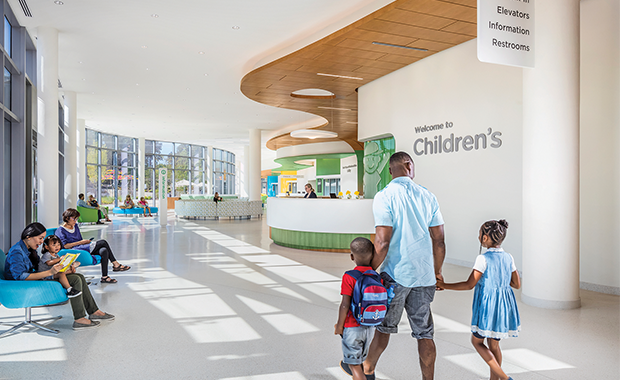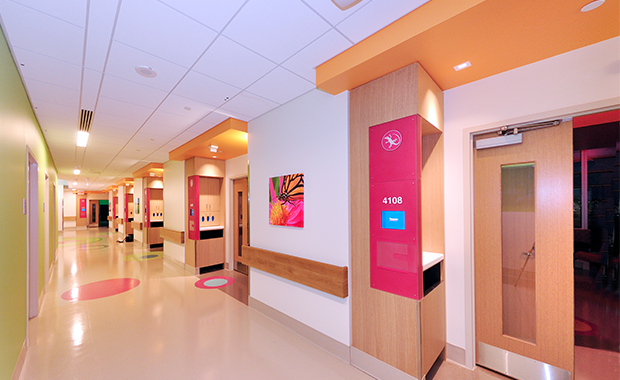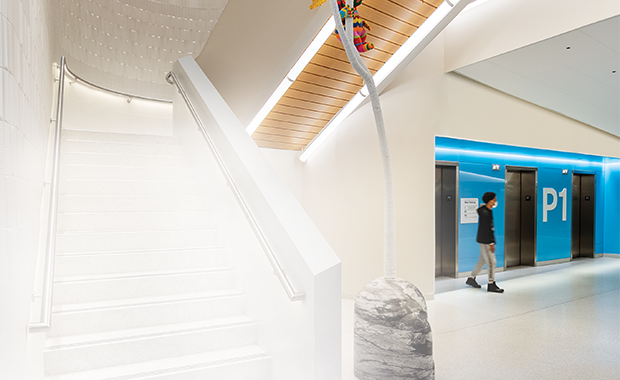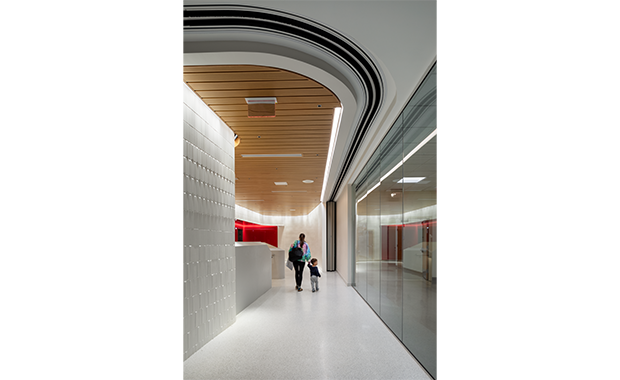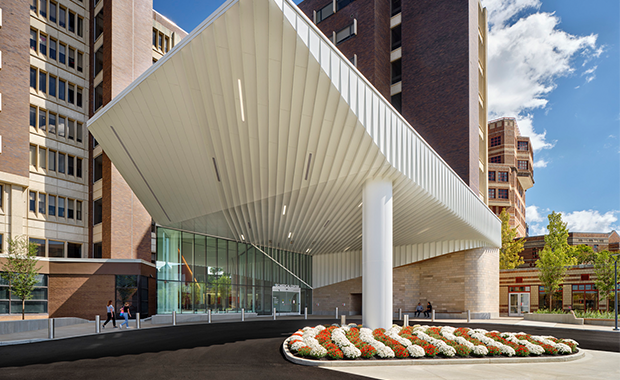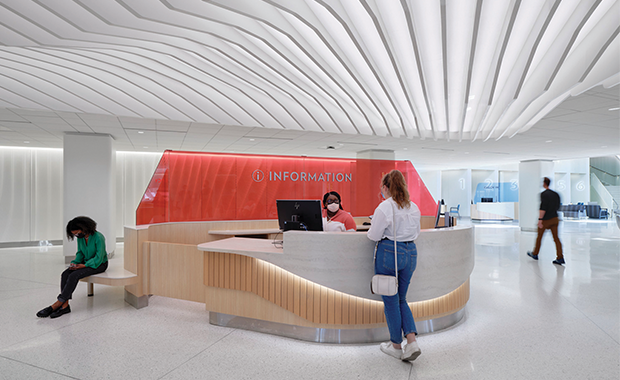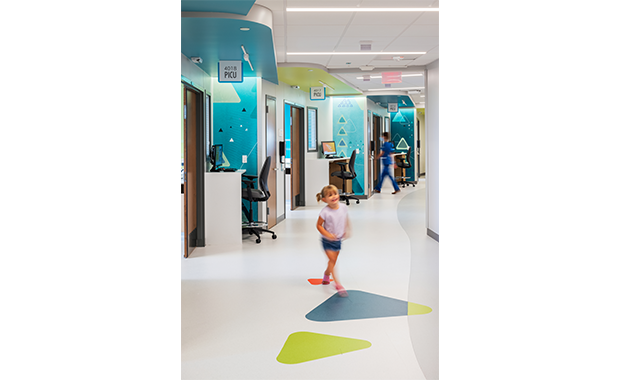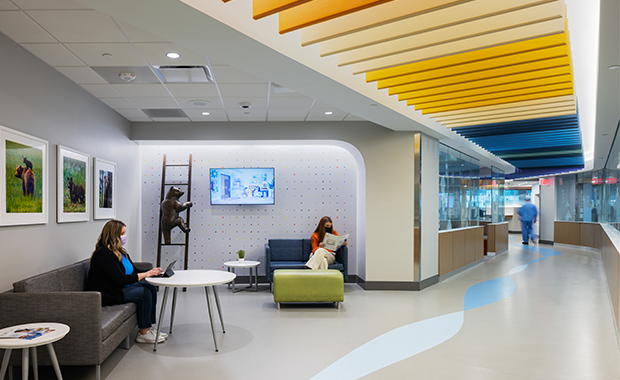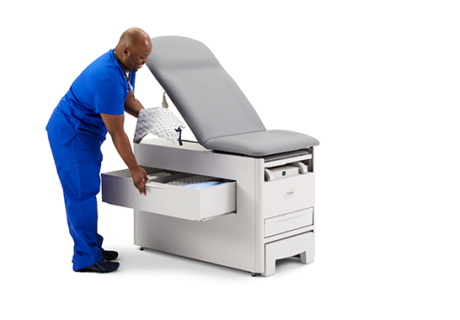3 Key Principles Of Successful Wayfinding In Healthcare Facilities
This article was originally published on October 2, 2023, and is among Healthcare Design’s most-read articles of 2023. To see a full list, click here.
The challenges of designing effective wayfinding for healthcare facilities are considerable. As with other commercial building projects—whether it’s a hotel, airport, university campus, or big-box retailer—the goal is to guide users to what they’re looking for, where they need to be, as seamlessly and pleasantly as possible.
In healthcare, however, add to that a heightened state of anxiety over their health or that of the loved one they’re accompanying. Consider the diversity of those using the space in terms of age, culture, socioeconomic status, education, and the full gamut of physical and mental abilities.
Healthcare facilities also change regularly over time: Departments move from one floor to another to accommodate shifting population needs, and campuses grow through building acquisitions and new-build projects that can necessitate massive programmatic changes. Then there’s the sheer complexity of the terminology and vast types of services being navigated in healthcare spaces.
In the face of all these challenges, Healthcare Design spoke with healthcare designers from a variety of firms to find out some of the common principles they rely on to develop successful wayfinding programs.
Principle 1: Early planning for wayfinding
Scale, colors, lighting, architectural details, artwork, landscaping, and signage can (and should) all play a role in wayfinding, designers shared. And the best way to make sure these elements work in harmony to lead visitors through the space is to start the wayfinding conversation early on.
“It needs to be integrated from day one. If you try to shoehorn something in, you’re just being reactive. It’s going to be less effective,” says Kevin A. Day, principal at HGA (Washington, D.C.).
A holistic design approach creates an opportunity for different perspectives to work together. “The interior designers and wayfinding designers aren’t thinking about the different parts and pieces alone,” explains Elizabeth Von Lehe, design director for HDR (New York). “They’re thinking about the grander goal of the space, how it’s going to be used, what pain points we’re actually being tasked with mitigating.”
Adds Phuong Nguyen, associate principal and lead experiential graphic designer, Page (Atlanta): “Early engagement in the planning process means we can ‘reserve’ the most effective locations for wayfinding.”
Incorporating wayfinding early also sets the stage for thoughtful expansion in the future, so that the wayfinding strategy remains cohesive even in newer spaces. Chris Bowles, senior environmental graphic designer at Page, says he’s always looking ahead: “It’s in the back of your mind that, OK, we might have two buildings here today. But you look at the site, you see a lot of unused land, and you know that eventually it’s going to be brought online and new buildings added,” he says.
With that in mind, designers can create wayfinding and signage guidelines for owners that can be applied for future growth. Day cites a project for Children’s National Hospital in Washington, D.C., in which HGA is creating a wayfinding toolkit for the hospital that can help identify new clinic or department entries.
“They don’t have a lot of landmarks so we’ve created a system that’s not just signage types, but more like a design guide that can be used on smaller renovations,” he says.
Principle 2: Reducing visual clutter in healthcare facilities
Layering of elements within healthcare facilities can help establish a natural, step-by-step wayfinding approach. “We’re thinking about scale, we’re thinking about lighting and color,” says Brooke Behnfeldt, principal, GBBN Architects (Cincinnati). “It’s all those sorts of visual cues that people pick up on immediately and intuitively.”
Adds Mary Dietrich, managing director, experiential design at Kolar (Cincinnati), “It’s about creating simple hierarchies that lead your eye through the space,” she says.
“We’re all different. Some of us appreciate words, some of us remember color elements, some appreciate other visuals. What we’re trying to do in wayfinding is trigger the mind.” Ideally, all these elements work together to reinforce the path.
A common scenario in renovations and expansions, says HDR’s Von Lehe, is that facilities “want to solve a wayfinding problem by adding another thing rather than going through the exercise of removing a roadblock.”
And whether it’s a renovation or a new build, “less is more” should be the wayfinding mantra, according to all the designers consulted, to keep visual clutter to a minimum and build in moments to pause and consider the next step.
For example, GBBN recently redesigned the main entrance for UC Health UC Medical Center in Cincinnati. Aaron Anderson, market design leader and principal at GBBN, says that some existing elements “were deliberately relocated or better situated to provide for an appropriate amount of arrival, a place to come in and transition and take their jackets off.”
Changes included relocating the gift shop, repositioning bathrooms and guest services, and centrally locating an information desk to help direct movement. “The information desk is a key moment, with visually free space around it,” says Kolar’s Dietrich, who worked with GBBN on the project, “so you can appreciate it as a destination point.”
Principle 3: Signage strategies for hospitals and clinics
While wayfinding might be equated by some to signage, designers say signage should be treated as just one piece in the wayfinding kit of parts. “I always feel that signage is the punctuation in the sentence,” says Page’s Nguyen. “It’s pause and reinforcement. You’re really looking to natural architectural cues [to guide the eye], whether that’s a form, color, or finish change. Your eyes follow patterns.
“When there’s a change in that material or structure, that’s when you come up to notice that you need to make a decision.” Beyond simply labeling important spaces, then, signage should exist to reassure and help people make those decisions.
But owners and facility staff can often rely too much on signage as a Band-aid, a shorthand to true wayfinding when new buildings are added or departments move around. Designers argue that this can make things worse, adding visual clutter, creating conflicting signals, and disrupting the careful wayfinding strategy that was implemented in the first place.
Besides, they say, following signs isn’t the way most people navigate healthcare spaces. “We can label all day long,” Von Lehe says. “But in reality, a stressed-out family member will go to the nurses’ station and ask how to get somewhere. And instead of talking about the signs, the nurse will say, ‘Go down that corridor and turn right at the bear statue.’”
Landmarks—like the bear statues HDR peppered throughout a recent project for Children’s of Omaha—are a significant component of healthcare wayfinding. “Landmarks are hugely important,” says HGA’s Day. “It gives the assurance that, ‘OK, yeah. I’m on the right track.’”
Tailoring wayfinding
While GPS apps have transformed the way people navigate the outside world and digital signage becomes increasingly more interactive and easier to manage, the use of these technologies and others within healthcare wayfinding is currently still limited, designers say—or at least slower to be adopted.
The issue isn’t lack of interest in digital solutions from healthcare systems, the designers say; it’s more a question of what’s best for the system’s population.
Older people make up a high percentage of hospital visitors, many of whom are less comfortable with such tools.
And when considering the challenges of an extremely diverse user population that’s navigating complex spaces while experiencing anxiety, more experimental wayfinding solutions present more risk.
“Wayfinding systems are always a blend of multidimensional aspects,” says Nguyen. “How those are blended—the percentage of each aspect—depends on the hospital location, the local community, comfort with technology. We’re all trying to balance that. It’s a very tailored approach.”
Kristin D. Zeit is a contributing editor at Healthcare Design and can be reached at kristinzeit@gmail.com.

